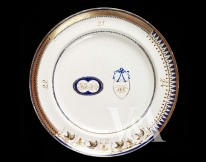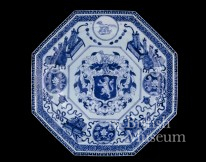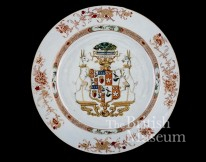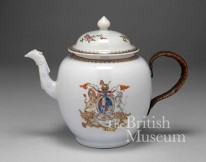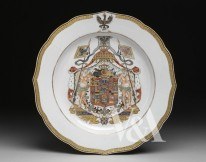4 Special Orders: Armorial Porcelain
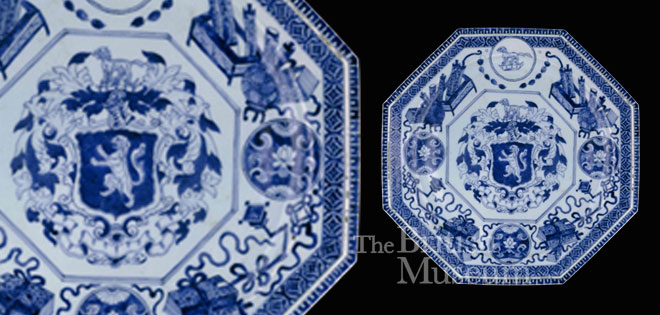
Armorial porcelain succinctly illustrates new consumer markets in Europe, North and South America. There were no fifteenth century armorial porcelains made in China. Heraldic ceramics made between the sixteenth and nineteenth centuries were produced and supplied to particular identifiable customers. An enormous number of armorial designs survive – at least 6,000 were made for British people – clergymen, government officials, landed gentry, traders, companies and societies. Some extant services are well-documented with surviving original patterns and shipping details. This correspondence shows us how these designs were transmitted and what they cost. Coloured services were more expensive than blue-and-white ones.
These ceramics can provide a framework of dated pieces – a chronology for looking at other export wares. We can even see pieces where the relaxation of quality control is apparent. Changes in demand can be traced through individual families as later generations ordered their own armorial services. There is a remarkable standardisation of forms for these services which was convenient for packing and shipping. The flat plate and other typical forms such as the handled cup were introduced from Europe to China and are commonly found with coats of arms. Most of the armorial designs were appropriated from European source materials (ceramics, metalwork, textiles and painted or printed paper.
